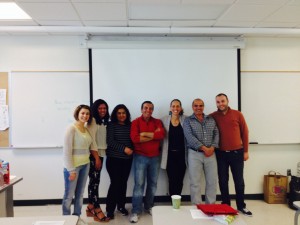Betwixt, Between and Beyond: Racial formation and “mixed race” identities in New Zealand and Singapore
National University of Singapore
2013
345 pages
Zarine Lia Rocha
A THESIS SUBMITTED FOR THE DEGREE OF DOCTOR OF PHILOSOPHY DEPARTMENT OF SOCIOLOGY
“Mixed race” identities are increasingly important for academics and policy makers around the world. In many multicultural societies, individuals of mixed ancestry are identifying outside of traditional racial categories, posing a challenge to systems of racial classification, and to sociological understandings of race. Singapore and New Zealand illustrate the complex relationship between state categorization and individual identities. Both countries are diverse, with high rates of intermarriage, and a legacy of colonial racial organization. However, New Zealand’s emphasis on voluntary, fluid ethnic identity and Singapore’s fixed four-race framework provide key points of contrast. Each represents the opposite end of the spectrum in addressing “mixed race”: multiple ethnic options have been recognized in New Zealand for several decades, while symbolic recognition is now being implemented in Singapore.
This research explores histories of racial formation in New Zealand and Singapore, focusing on narratives of racial formation. The project examines two simultaneous processes: how individuals of mixed heritage negotiate identities within a racially structured framework, and why—how racial classification has affected this over time. Using a narrative lens, state-level narratives of racial formation are juxtaposed with individual narratives of identity. “Mixedness” is then approached from a different angle, moving away from classifications of identity, towards a characterization of narratives of reinforcement, accommodation, transcendence and subversion.
Drawing on a series of 40 interviews, this research found similarities and differences across the two contexts. In Singapore, against a racialized framework with significant material consequences, top-down changes sought to symbolically acknowledge mixedness, without upsetting the multiracial balance. In New Zealand, state efforts to remove “race” from public discourse allow ethnicity to be understood more flexibly, yet this has not always translated easily to everyday life. For individuals in Singapore, narratives were shaped by a racialized background, as they located themselves within pervasive racial structures. In New Zealand, stories were positioned against a dual narrative of fluidity and racialization, reflected in narratives that embraced ambiguity while referring back to racialized categories.
The four narrative characterizations illustrated the diversity of stories within each context, yet highlighted certain patterns. Narratives of transcendence were present in both countries, illustrating how historical racialization can be rejected. Narratives of accommodation were more common in New Zealand, as the dissonance between public and private understandings of mixedness was less stark. Narratives of reinforcement were more frequently seen in Singapore, mirroring colonial/post-colonial projects of racial formation in which personal stories were located. Narratives of subversion were present in both countries, but were more common in New Zealand, where subversion required less conscious effort.
Overall, this research drew out how identity can diverge from official classification, as individuals worked to navigate difference at an everyday level. State acknowledgements of mixedness served to highlight the continued dissonance between fluid identities and fixed racial categories, as well as the unique balance of racialized choice and constraint in Singapore and in New Zealand. Personal narratives revealed the creative ways in which people crossed boundaries, and the everyday negotiations between classification, heritage, and experience in living mixed identities.
Read the entire dissertation here.



